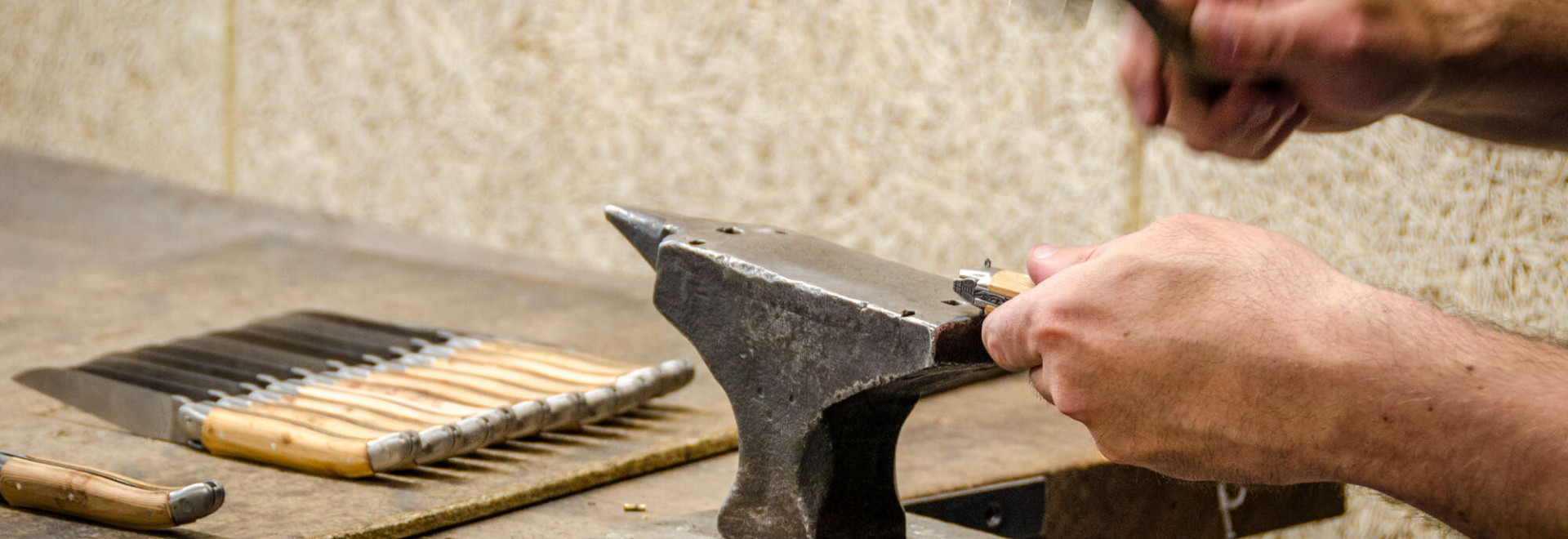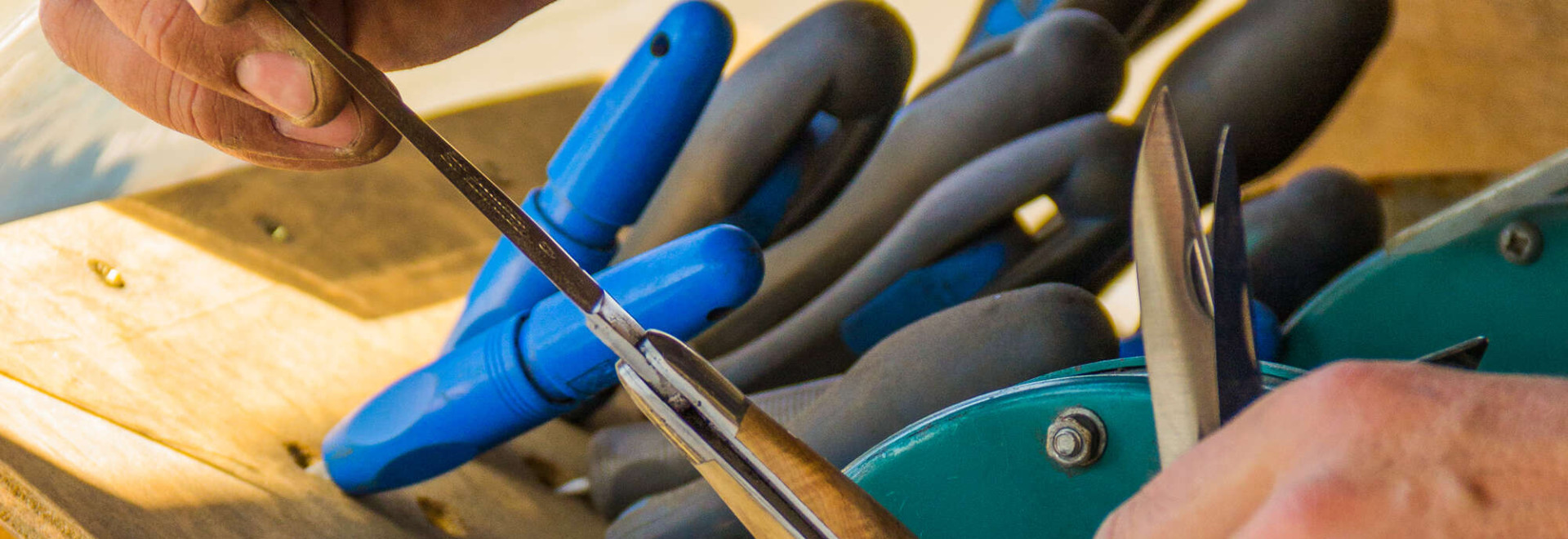Laguiole - A landmark in French cutlery
Laguiole is an iconic village in the Aubrac region of France, and is world-famous for its exceptional cutlery heritage. The tradition of cutlery-making in Laguiole dates back several centuries, and local craftsmen perpetuate this precious art from generation to generation. Laguiole knives are internationally renowned for their exceptional quality and elegant design. When you visit Laguiole, you'll have the opportunity to immerse yourself in the fascinating world of cutlery and discover the history and expertise behind each blade. You can visit the craftsmen's workshops, admire the meticulous gestures and discover the different stages in the manufacture of a Laguiole knife. A trip to Laguiole is an immersive experience that allows you to appreciate the mastery and craftsmanship behind these unique cutlery creations.
Laguiole - A cutlery destination not to be missed
If you're passionate about knives and the art of cutlery, Laguiole is a must-visit destination. As well as discovering the workshops and meeting the talented craftsmen, you can also explore the specialist shops where you'll find a vast selection of authentic Laguiole knives. Whether you're looking for a traditional knife for your collection, an elegant table knife or even a personalised knife, Laguiole has a varied range to suit all tastes and needs. What's more, you can learn more about the different materials used, the manufacturing techniques and the distinctive features for which Laguiole knives are renowned. A visit to Laguiole is a total immersion in the world of cutlery, where you can choose a lasting and authentic souvenir that represents French craftsmanship.
Laguiole: History and Renaissance of an Exceptional Knife

The knife of Laguiole finds its roots in the early nineteenth century, in the small village of Laguiole, in Aveyron. Originally, it was a simple folding knife used by shepherds and peasants for their daily tasks: cutting bread, cheese or working leather.
Its design is inspired by a traditional Spanish knife, the Navaja, introduced in France by transhumant shepherds from Catalonia. From 1829, the first knives of Laguiole are made by local craftsmen, with a sharp blade, a handle in wood or horn and a nail used as a pivot.
Over time, Laguiole’s knife becomes more beautiful and perfect:
In 1840, a punch is added to some models to pierce the leather and help shepherds to care for their animals.
In 1880, a corkscrew blade appeared to meet the needs of wine lovers, including innkeepers and travelers.
The famous bee or fly motif, engraved on the spring of the knife, becomes a distinctive sign of Laguiole.
At the end of the 19th century, knife production in Laguiole decreased due to competition from cutlers in Thiers (Puy-de-Dôme), who produced similar models in larger quantities and at lower cost.
In the 1980s, under the impetus of passionate craftsmen, the manufacture of knives returned to Laguiole, with a renewed interest in tradition and handmade. Workshops and manufactures are established again in the village, perpetuating an ancestral know-how.
Why is Laguiole so famous?
Laguiole owes its success to exceptional craftsmanship, an iconic product, and a strong local identity. Here are the reasons that have made this small village of Aveyron a world reference.
The imperial bee: a symbol from Napoleon?
According to legend, the bee that adorns most of Laguiole’s knives today was a gift from Napoleon I to the inhabitants of the village. Seduced by the expertise of local craftsmen, the emperor would have allowed Laguiole to use the bee – an imperial symbol – as a mark of prestige and recognition for the exceptional quality of their knives.
However, this story is more myth than reality! The bee did not actually appear on Laguiole’s knives until much later in the 20th century. Before that, the spring was often decorated with a clover, a scallop or other engraved motifs.
Despite this, this legend has survived and continues to give the Laguiole knife a prestigious aura and a touch of imperial history.

A brand synonymous with authenticity and excellence
The "real" Laguiole knife does not have a protected designation of origin, which has led to many copies made in China or Pakistan. However, local craftsmen managed to preserve the tradition by relaunching production in Laguiole in the 1980s. Today, buying a real Laguiole from local cutlery is a guarantee of authenticity and quality.
International success
Today, Laguiole is a brand recognized worldwide, symbol of made in France, luxury craftsmanship and traditional know-how. Whether in the kitchen, collection or daily use, the Laguiole knife remains a timeless icon.
More than just a knife, Laguiole is a story, an art and a heritage!
Laguiole: between gastronomy, terroir and open spaces
Beyond the knife, Laguiole is also known for:
Its AOP Laguiole cheese, made from the milk of cows from the Aubrac.
La Maison Bras, a 3-star gourmet restaurant run by the Bras family, which showcases local cuisine.
Its exceptional natural environment, with the Aubrac plateau, which attracts hikers and lovers of open spaces.
How to get to Laguiole
To reach Laguiole from Laussac, it takes about 50 minutes by car. The route crosses the green landscapes of Carladès and Aubrac, offering an immersion between wooded valleys, wild plateaus and picturesque villages.
Route by car
Leave Laussac by taking the D98 towards Thérondels (about 7 km).
In Thérondels, take the D900 towards Lacalm (about 20 km).
In Lacalm, continue on the D921 towards Laguiole (about 18 km).
This route crosses beautiful landscapes between the shores of Lake Sarrans, the green valleys of Carladez and the vast plateaus of Aubrac.
